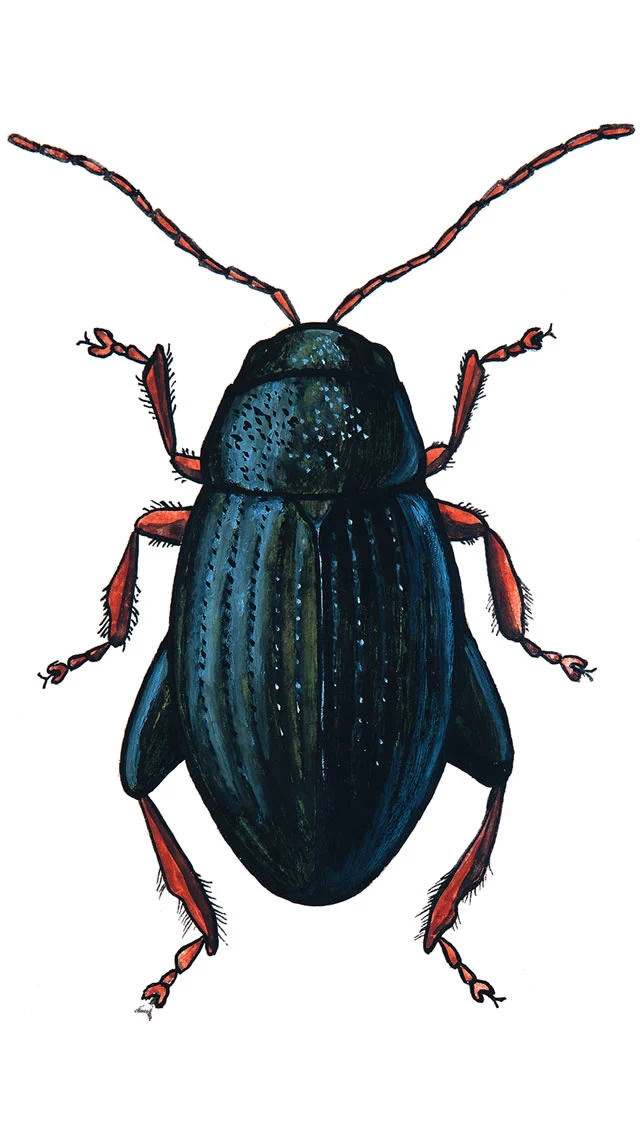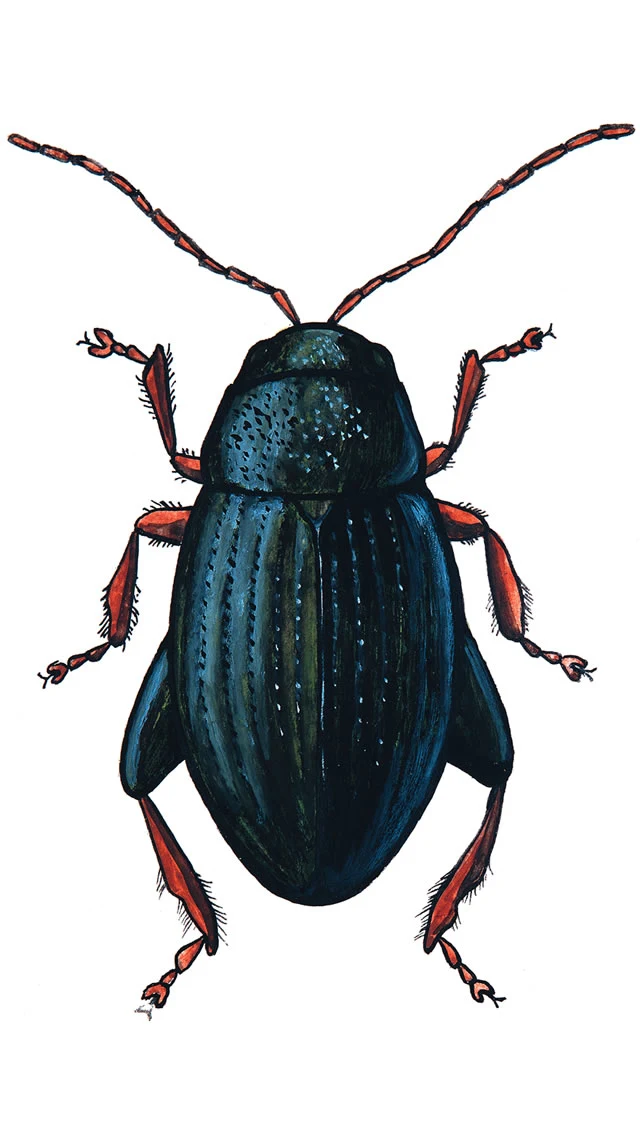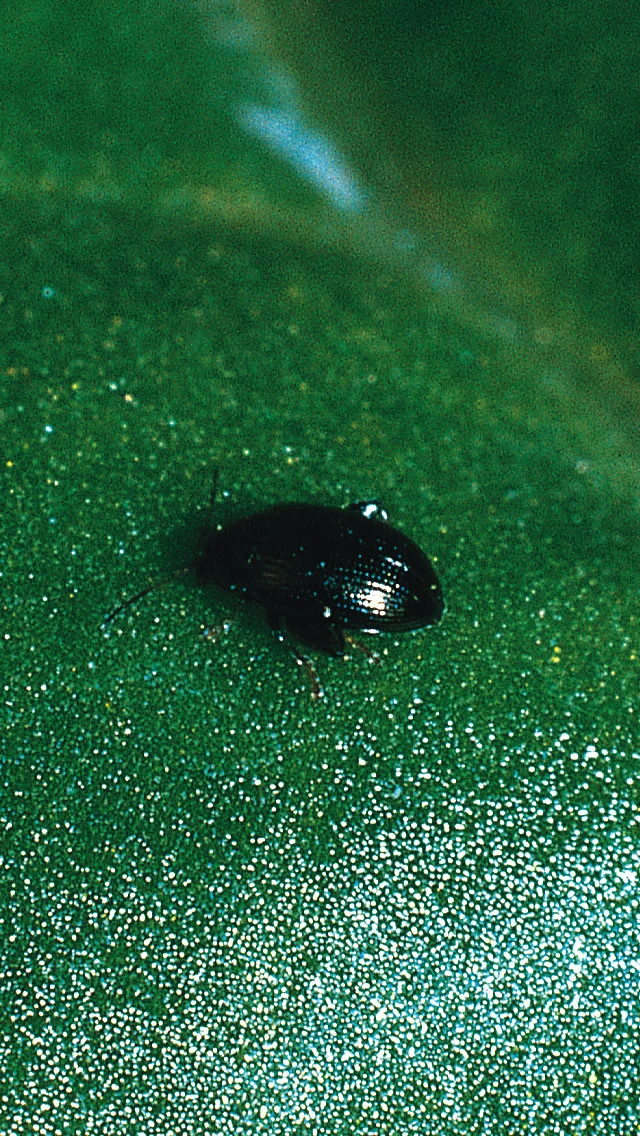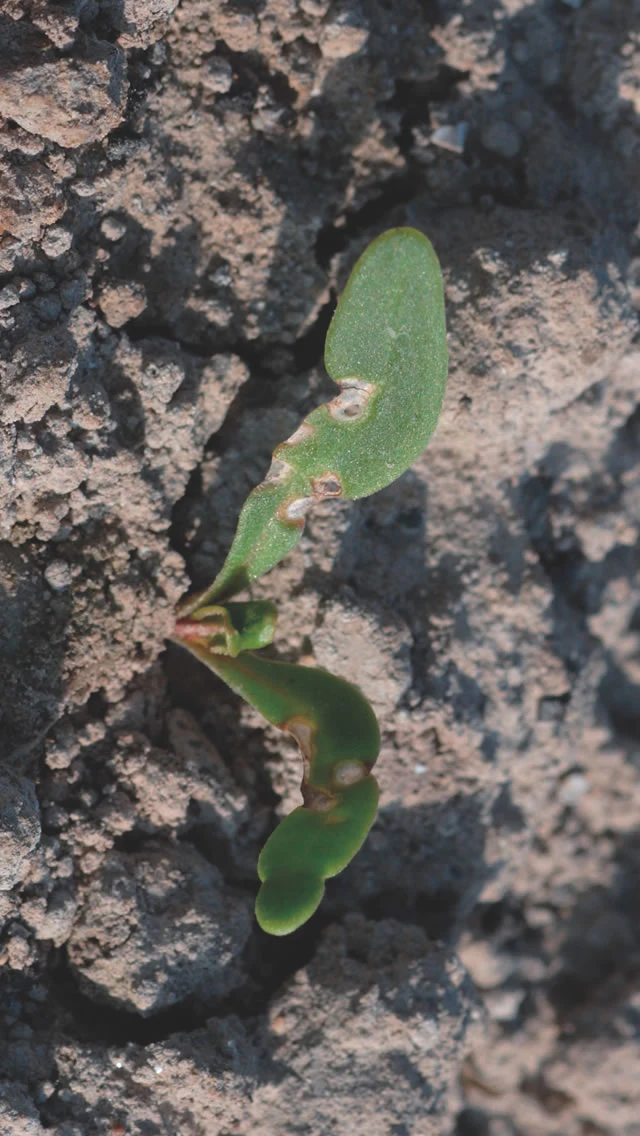
Beet Flea Beetles
Chaetocnema concinna
Identification
The beet flea beetle is distinct from the turnip flea beetle (Phyllotreta spp.) which feeds on cruciferous weeds and crops such as brassicas rather than crops of beet. Beet flea beetles have small black to bronze shiny bodies up to 2 mm long. They have well developed hind legs which enable them to jump when disturbed. Other host plants include Polygonum spp. and mangolds.
Symptoms
Small feeding pits are left in the cotyledons and young leaves which develop into holes, typically described as ‘shot-holing’, as
the foliage grows and expands. Severe attacks can reduce the green leaf area of the plants and increase their susceptibility to herbicide damage.
Life-cycle
The adults overwinter in sheltered areas, such as hedges and tussocky grasses, and fly into emerging crops in early spring when temperatures are suitable. Eggs are laid in the soil and the emerging larvae feed on the roots of the growing crop in late summer, but damage is not significant.
Importance
The adult flea beetles cause most damage when high populations invade establishing crops in cold, dry sunny weather when growth is slow. Crop establishment can be checked and some individual plant loss can occur.
Threshold
None established.

Beet flea beetle illustration

Beet flea beetle adult

Beet flea beetle damage


